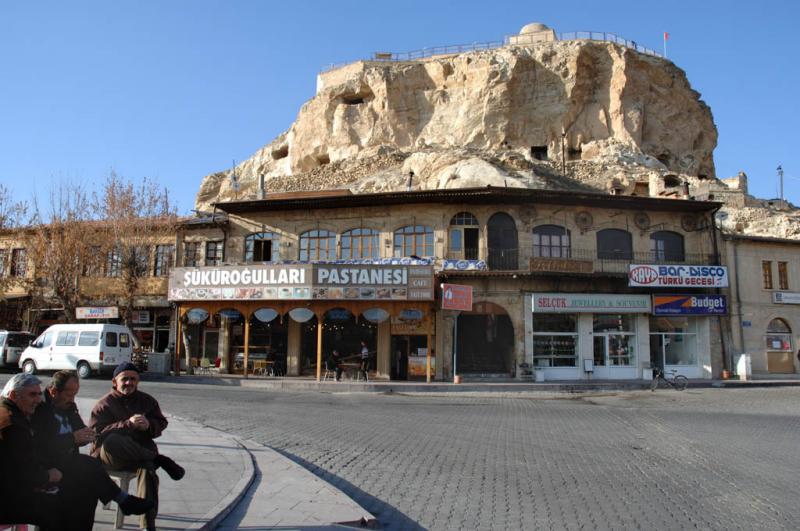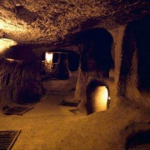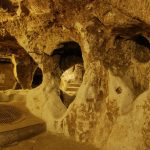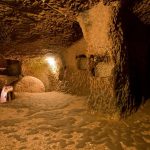To mention briefly about the establishment of Ürgüp Museum; The single dome structure of Temenni Tepes in Urgup city center started to collect artifacts bearing museum values after 1965. The land in which the museum is located has been allocated from Urgup Municipality and started its construction in 1968 and completed its doors in July 1971 and opened its doors.
Works Exhibited in the Museum
In the museum’s southern, eastern and western facades, stone and terracotta artifacts are exhibited in the porticoes and entrance stairs.
In the entrance section, mammoth female fossils dating back to the Neogene-Miocene (pre-human-approximately 10 million years) excavated in the town of Mustafapaşa are exhibited.
In the first section of the exhibition hall, it is very likely that the seafloor fossils, which were thought to have been removed from the vicinity of Acıgöl, The geologic time (230-65 million years) is the part where important natural artifacts are exhibited in terms of nature, which is the inner sea-lake called Neotethys.
In the Archaeological section of the exhibition hall, handmade ceramics made of terracotta from the Bronze Age, Hellenistic, Roman and Byzantine periods, metal and glass artifacts, and gold, silver, bronze, silver and bronze statues dating from Greek, Roman, Seljuk, Bronze coins and medals are exhibited.
In the ethnographic section which is thought to belong to the recent past, the experience of Ürgüp and its environs, the fabric, mine, stone, glass, ceramic artifacts, lanterns, lamps, manuscripts, silver jewelery, belts, seals and seal presses, kitchen utensils, books and fermans, Men and women clothes, weapons, door knockers, swords and pistols, hookahs, mouthpieces.


































